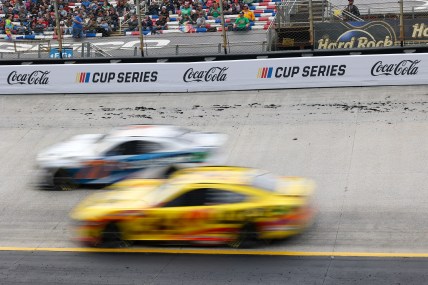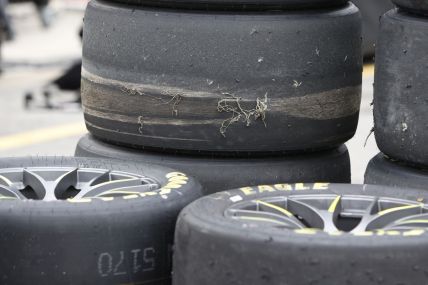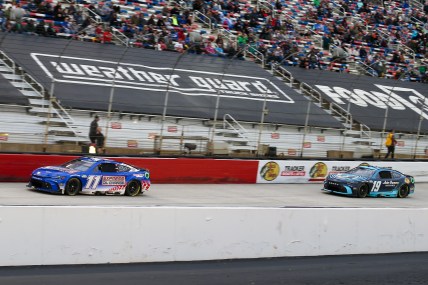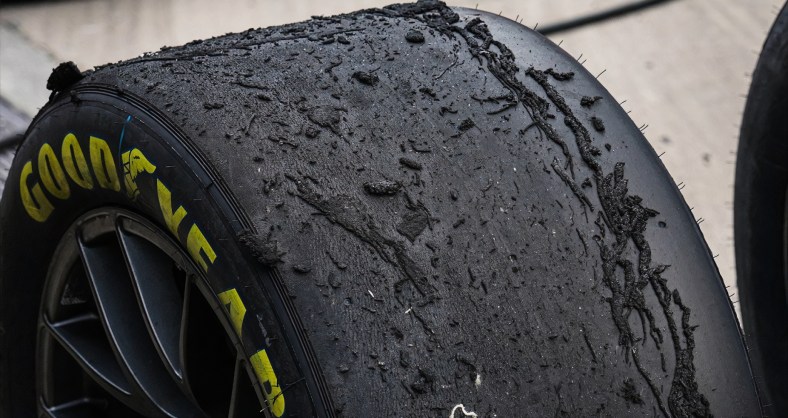
Goodyear officials are still working towards understanding what happened on Sunday night in the NASCAR Cup Series race at Bristol Motor Speedway but feel a lot more positive about the end result than they did in real time.
On one hand, the tires did not respond the way the told teams they should, and that is a mistake but it has also been described as a ‘happy accident’ due to the racing it produced.
But even before Goodyear can go about working towards scaling that sort of tire wear in a more reasonable manner, it has to be understood why the compound did not respond in a similar way as the exact same mixture did in September for the Bristol Night Race.
“Yesterday was a drastic departure from what we expected,” Stucker said Monday on SiriusXM NASCAR Radio. “The goal now is to just try to figure out why that happened but I think we’re approaching it really positively.”
It helps that the nearly entire industry praised the fundamental end result, extreme tire wear that forced teams to manage the life of the tire, resulting in a record 54 lead changes amongst 16 different drivers. It was also the most lead changes for any race not at Daytona or Talladega.
Drivers have been begging for Goodyear to bring a tire with more aggressive falloff and Sunday was a scalable proof of concept why.
“For the past year or so,” Stucker said, “the drivers have been pushing us to be more aggressive in our recommendations to be more aggressive in tire wear and let them manage the tires over the course of the run. And I think that’s what we saw yesterday. Tire management was key. It was probably the most important thing of anything in the race.
“Now, I’m not advocating that we have tire wear as severe as we saw yesterday every race. But I think it’s a place where we could draw a line in the sand and I think we can learn from that.”
It was the same compound from last September but the track applied a resin as the traction compound in the corners after seven years using PJ1 TrackBite. The ambient temperatures were also under 65 degrees, which is the point that rubber tends not to lay on concrete tracks like Bristol.
Stucker wants to understand if those variables contributed to what happened.
“I mentioned before that this was the same tire that we raced last in September of last year. It’s the same D numbers; it’s a different production line,” Stucker said. “So we’re not taking anything for granted. It’s the same spec, but is there anything that could stand out that could create a difference? A couple of drivers after the race told us, ‘Look, you can’t convince me that was the same tire the way it behaves,’ and we get that. I mean, there’s no question that the tire didn’t wear the same. It didn’t put rubber down like it did in September. It just behaved differently.
“Now was that because of the tire itself? Was that because of the race track? Obviously, resin was put down on the race track instead of the PJ1 which was done last year. We haven’t really decided if that could be a factor yet. That’s one thing that we’re looking at. … Was there anything they did differently washing the race track or anything like that?
“So there’s a lot to go through. But we’re certainly looking at every piece of the puzzle from our perspective and make sure there was nothing in our raw materials or any of our processes that would create any sort of difference.”
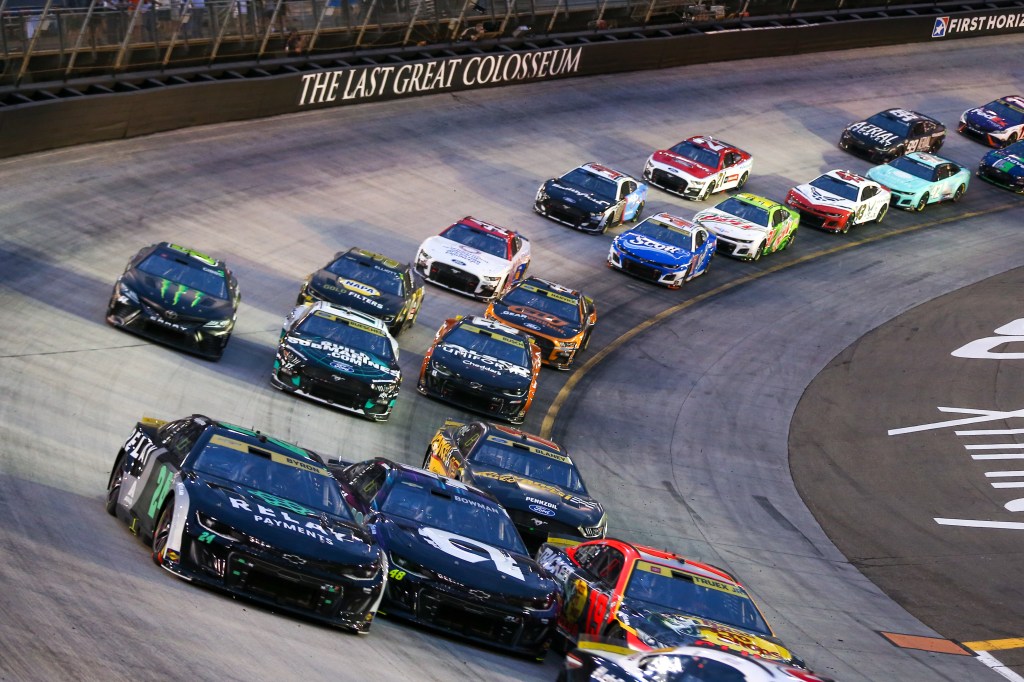
In real time, race winner Denny Hamlin thought someone at Goodyear might have accidentally added something to the chemical compound when making this batch but has come around in the days since to the weather theory.
“Listening to all the facts and all the variables, and that we’re all trying to put these pieces of the puzzle together,” Hamlin said. “My thesis is now that these tires are not full green tires. They have oils in them. My opinion for a long time, for all the concrete tracks, unless our number has always been 65.
“It has to be 65 degrees out or the track will not take rubber. Martinsville has always been that way. Bristol has not always been that way because you have more load there but I believe the viscosity of the of the tire did not get to temperature over the weekend.
“When they tire tested last year, it was in the middle of the summer, and it was a lot warmer, the track was a lot warmer and the track rubbered up fine.”
Ultimately, Stucker credited the teams for making it work, for NASCAR’s diligence in how it called the race and said he expects to have a tire test prior to the Night Race, due to its importance as a playoff race.
But he doesn’t expect the changes need to be too radical.
“With the feedback we’ve gotten and hearing some of the comments, we don’t have to go too terribly far, I think,” Stucker said. “We don’t want to go back and go too hard. But I think we have to understand what happened, and we have to go back and try to replicate that and make sure that it doesn’t happen again. We’ve got to understand why we were surprised and what we can do to fix it so we can go back with the expectation of 80 percent or so (of Sunday’s wear), go back with that in September and deliver exactly what we expect.”
Matt Weaver is a Motorsports Insider for Sportsnaut. Follow him on Twitter.
